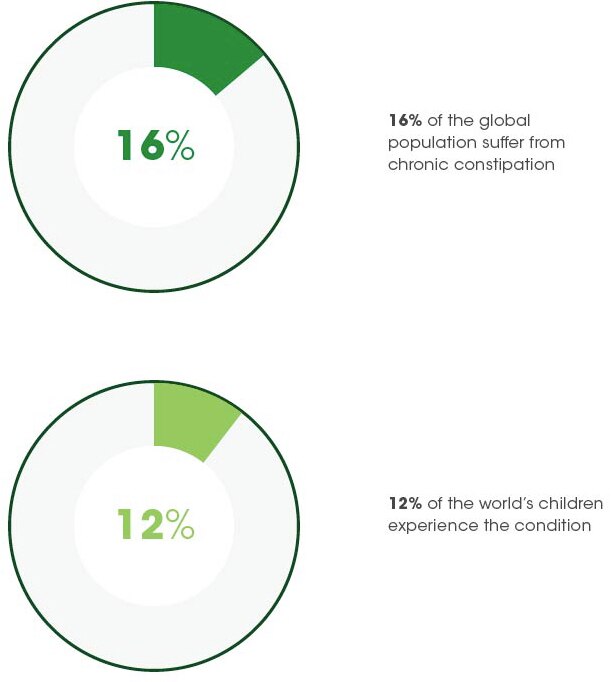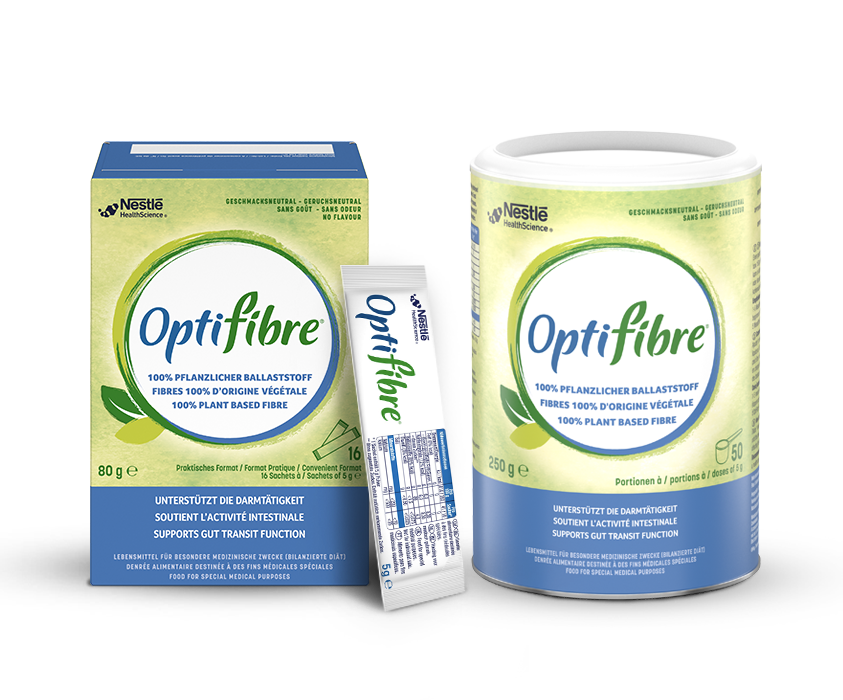Press
Context/Definition
Chronic constipation is a symptom-based gastrointestinal disorder characterized by difficult or infrequent passage of stool (less than 3 times per week), hardness of stool, and/or a feeling of incomplete evacuation. It can result in some discomfort such as abdominal distension, abdominal pain, headache, dizziness and poor appetite. It can be occasional (occasional causes) or chronic (when symptoms last more than 6 months). It is a common disorder that affects about 16% of adults worldwide. Chronic, frequent and reoccurring constipation lasting for more than 4 weeks usually requires intervention.

Constipation can be linked to unbalanced diet like a lack of fibre intake, use of certain medicines, change in habits (travel, new job, …), pregnancy, stress and many others. Growing evidence also indicates that alterations of intestinal microbiota may contribute to constipation and constipation-related symptoms. The result is that constipation represents a discomfort for many people with physical and emotional consequences.
Regardless of etiology, the initial therapeutic approach to primary constipation generally consists of diet and lifestyle changes such as encouraging adequate fluid and fibre intake, regular exercise, and dietary modification.
Facing constipation and the importance of fibre

The WGO recommends consuming 30g of fibres per day for adults. However there is a “fibre gap” between the quantity consumed and the recommended one. This “fibre gap” is well-documented in many countries. In the US, fibre is considered a “nutrient of public health concern”.
This is why fibre supplementation is recommended in case of constipation after diet and lifestyle changes fail. Laxative therapy is then used if fibre therapy fails.
But not all fibres supplements (psyllium, PHGG, wheat dextrin, inulin, FOS,…) are equivalent. Fibres differ widely in their physicochemical properties/characteristics, which drive their physiologic effects and health benefits as some have limited data to support constipation benefits, generate gas and bloating, or do not have any prebiotic effect to reeducate. Among existing fibres, partially Hydrolyzed Guar Gum has the strongest scientific evidence to support to manage constipation in short term and rebalance the intestinal flora on long term, while managing abdominal pain, bloating, and gas.
What is PHGG (Partially Hydrolyzed Guar Gum)?
PHGG is a powder with no taste nor smell made 100% plant origin. It is intended to enrich in soluble prebiotic fibre the usual daily diet of constipated chronic sufferers. It's a prebiotic fibre that comes from the seed of a legumina (Cyamopsis tetragonoloba) thats allows the microbiota to be rebalanced without side effects nor habituation. Its neutral organoleptics characteristics allow an easy complementation of the dietary fibre intake in patients with constipation as it dissolves easily in any food or beverage. Used with the recommended doses , it limits adverse effects of other fibres such as bloating. Many published clinical studies have shown its interest in case of constipation, the latest one being in 2017.










